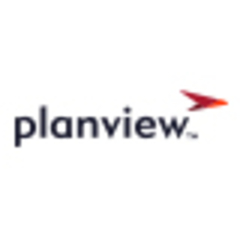What is our primary use case?
Our primary use case of this solution is to capture all corporate business demand across the organization then to visualize that demand in a way that can be used by the senior management team to make decisions. We use it to collect a portfolio view of all projects that were in flight and various stages of the delivery lifecycle. We ride risk and issue management capabilities, capturing lessons learned, dependencies, plans, schedules, and resourcing.
We also use it for:
- The ability to manage and review resource information around availability, demand, and schedules.
- The ability to report on that information.
- The ability to visualize our portfolios, that is key.
- Finally, we're using that information in order to generate meaningful reports.
How has it helped my organization?
PPM Pro has improved my organization through standardization. The big thing for us is that we came from a very immature state of play. Everyone had their own risk and issue management capabilities and their own different impacts for risks. We've been able to standardize that within the program delivery arena. That for us has been a major thing. We're all speaking the same language about the same things and using the same metrics in order to capture statuses.
We are exploring its ability to provide decision-makers with the insight they need to empower decision-making. The big thing for us was just to get our projects moving and delivering. We've historically been through a number of challenges and organizational changes within our area and effectively, Planview has enabled us to get a really good picture of where we currently are. The biggest challenge we had initially was that our executive leadership team didn't know how much change was going on. With Planview, we've been able to capture that and provide the metrics in order to see what they want to do and what needs to be reprioritized.
PPM Pro has also helped to reduce project delays by 50% in terms of highlighting common issues and risks. We hold monthly project reviews where everything is captured and we go through the project managers to highlight those high-level and high scoring risks and we are then able to take corrective action. The key thing is that we're using it as a tool to help support project managers. We're not using it to beat them up because they're not delivering stuff. It's really a tool to be able to surface those issues that wouldn't necessarily get surfaced.
What is most valuable?
The most valuable feature is that it's highly configurable. It's a highly configurable solution. We can design and build stuff quite readily ourselves. It's also very flexible. We are also using it to help identify pinch points within the organization. As in, we can identify where people need support and additional help.
PPM Pro has reduced the time it takes to generate reports. That for us is a big thing. Instead of us spending our time doing collation and presentation activities, we're actually doing more value-add activities in terms of analyzing the data and trying to interpret what the data is telling us.
PPM Pro absolutely enables us to create reusable project templates that reflect our project management lifecycle. It enables us to quickly establish and build projects as and when they've moved through the governance lifecycle or parts of the early stages of the governance lifecycle. We're also able to configure the ability to print a standard type of project or program in some of the cases we've started exploring. In terms of the benefits, it's given a visualization to our senior management team of where things are at any particular time and they have the ability to drill down into the detail where necessary or keep it as high level as they need.
It's literally just the click of a button to create a project in PPM Pro. It's a very quick process. The key thing that we have is the governance processes and the approach for capturing enough information. In terms of that, the lifecycle is about two or three weeks, but actually being able to get a project into the system is exceptionally quick. You can build workflows to help support that. We don't use it at the moment, but it has the ability to build workflows.
I would say it's quite straightforward to build a team within a project. It's very easy. It comes back to data and I think it's the same with any PPM tool, the tool is only as good as the data that you've got in there. We did a lot of work initially to make sure that our resources were in place. It's just a case of project managers being able to select who they want on their teams and vice versa. If they're not sure, we also have the ability to set up resources as well and then our resource managers to select people that they want to start based on their availability.
In terms of viewing schedules, I would rate PPM Pro's ability an eight or nine out of ten. It's a very similar interface to Microsoft Project, which I'm sure a lot of project managers are very used to in terms of the details pages. It's a very nice layout in terms of navigation. You can select your ability to view different timeframes and you can view a purely word-based view of your plan. There is the Gantt chart availability as well. It's very easy and quick to switch between the two. You can also drill down into specific details at a task level summary task and you can bulk upload or update tasks.
At the moment, we don't actually use timesheets or its ability to allocate hours. Integrating and using timesheets is on our roadmap but we don't use it at the moment. From the exposure that I've had in terms of playing around with it, it seems pretty fully functioning and it gives us the information that we want to be able to capture. And then it's how we then suck that information out to then push into our external systems or corporate systems.
We always had a very high number of projects. We have around 30 going at the moment and they're quite significantly sized projects. In terms of the number of projects, I think the biggest challenge we have is getting resources on board in order to manage them. We can certainly capture them and we can identify where the pinch points are. It's just our recruitment process is quite a slow process. In terms of being able to run projects, we can actually identify what we can run based on the constraints that we have at the moment, whether that be financial or resource-based, and we use the information from PPM Pro in order to provide that.
What needs improvement?
Reporting and dashboards need improvement. They've got the new beta coming out now and I've been playing around with that in our sandbox environment. I'm very impressed with the flexibility and functionality. In fairness, I was speaking to my senior management team and saying that we should go ahead and enable it in our production environment because I think it is actually now in the position where we can start getting it in place.
Another area for improvement, realistically, is regarding the financials, but it's been addressed as part of Planview's focus. That's one of the things that drew us towards Planview, that they're actively investing in developing the tool and making it best of breed. We can certainly see a lot of new enhancements coming forward that we're going to be taking on board.
For how long have I used the solution?
We have been using PPM Pro for over two years now.
What do I think about the stability of the solution?
I've never seen any issues with stability.
What do I think about the scalability of the solution?
We've had no issues with scalability. Being a software as a service, the amount of power that we need is determined by the number of licenses that we have.
There are 30 to 40 project managers. We have business partner managers who are the key interface in the business. We also have a number of resource leads. There are around 20 resource leads who are responsible for ensuring that resource demand can be met with the availability of their team members on that side.
Maintenance purely happens in the background. If we're developing new configuration changes, we'll do that ourselves in the sandbox and release it at an appropriate time. It's very minimal impact.
How are customer service and technical support?
Technical support is excellent. We've had some issues that have been dealt with very efficiently. There's a very quick response time and the consultants themselves are very capable in terms of responding to our questions, not just about tool configuration, but also best practices in the wider industry, specifically for where we work.
Which solution did I use previously and why did I switch?
We use Microsoft Project and Teams as well as part of this process. It's been a while since I've used the Microsoft Project tool suite. Microsoft Project has a lot of different types of applications to store different types of data within the project. For example, for risks and issues, we'd have to create a team site in SharePoint, for example, whereas in Planview, it's an all in one application. I'm very quick to be able to jump around to individual areas within the system. We're at the very early adoption stage of Teams at the moment.
There are pros and cons to each. In terms of speed, because it's on-premise, the local application is very quick. The downside with Projects is that it is very difficult to aggregate that data together. With Planview, bearing in mind that software is a service, it has so many opportunities to configure the system and also lock it down as much as you want, as long as you can get that standard configuration. With Microsoft Projects, it's very difficult to get that standard. You'll have people managing projects in the way that they're used to, which then becomes a big issue for us to translate that into the standardized reporting. Whereas with Planview, we can lock that down. We know exactly what our project managers need to enter when they're not entering information that we need and it's just a click of a button to get a report out when we need it.
Before PPM Pro we were using Microsoft Project desktop with Excel PowerPoint. It was a case of 90% of our time was spent collating information and presenting it in PowerPoint rather than actually doing the value-add work, which was to do the analysis on what data is actually telling me.
How was the initial setup?
I was involved all the way from product selection through to delivery and handover. The initial setup was fairly straightforward. As an organization, we had some challenges internally in that we were a brand new department delivering programs. We hadn't really got our processes set outright, but certainly, with the support and help from the Planview consultants who were working with us very closely and regularly meeting on a weekly basis, it was certainly a very straightforward piece. Once you get your head around how things are set up and the different terminology, it is actually quite a straightforward application to enhance yourself in terms of how you want to build it forward.
From the start of actually signing the contract, the deployment took around about three months, to the point where we had the projects in Planview and us actually using it practically.
Our strategy was originally going to be a big bang but we thought that there's only so much change that our project managers can manage. We took a few key elements and the first pieces were to get the demand requests in place so that we could see what demand we've got coming through. Then the next part was getting the projects and programs into Planview, and being able to start reporting on those projects. From there, we then started introducing the resource management side of things. More recently we've been looking at portfolio management and prioritization. Looking into the future, we're talking more about enhancing that portfolio management and demand capability and bringing the two together. That's more of an organizational thing rather than Planview. We've got the basics in there to get us where we need to be.
What was our ROI?
I wouldn't be able to quantify ROI in terms of the work that we're now focused on. We're doing many more kinds of value-add activities. Rather than having to go around and aggregate information together and then try and report it, we can make those recommendations now. We are also able to highlight those risks and issues before they actually become a true challenge to the company and to the delivery of that project.
What's my experience with pricing, setup cost, and licensing?
The key thing is to really get a good understanding of your stakeholders that are going to actually use it. It's differentiating between those that are going to be physically updating Planview information, versus those that are reading it and then just building your models around how you're going to use it because then you can effectively build your licensing models to support that. In some cases, you can save some money there.
Which other solutions did I evaluate?
We evaluated Planisware. In terms of maturity, PPM Pro was a much better fit for our organization. It was also highly configurable, so we could do a lot of it ourselves. It gave us the opportunity and a roadmap that as we mature, we can mature with Planview and still maintain our data. Whereas, some of the other tools were coming in right at the top end. Cost-wise, it was certainly one of the better value products that we had assessed the amount of functionality and flexibility that you got with the tool.
What other advice do I have?
My key advice is to standardize your terminology for projects and programs in portfolios; create a roadmap. Don't be afraid to say no, because you'll get different project managers with different experiences. Everyone will want to say, "Oh yeah, this is what I've done in the past and what I've done in the past," but don't be afraid to say no.
One of the challenges with any PPM tool is that if it's not Microsoft, then people aren't normally interested and I think the other side is that actually by centralizing this stuff, you're exposing weaknesses of project managers that they may not feel comfortable with. Try and position it as this is here to help you and to help us identify where we need to give further support. It's not there to question your ability or capability. It's here to give us that information that we can then help you to deliver.
We spent far too much time aggregating data from many different data sources. Having it in a single central place, we get one version of that truth. Everyone's aligned, everyone's standard and it makes it a lot easier for us in our management team to be able to visualize and view the data that we're capturing.
I would rate PPM Pro a nine out of ten. I think there's still room for improvement but there's a very active roadmap.
Which deployment model are you using for this solution?
Public Cloud
Disclosure: My company does not have a business relationship with this vendor other than being a customer.















